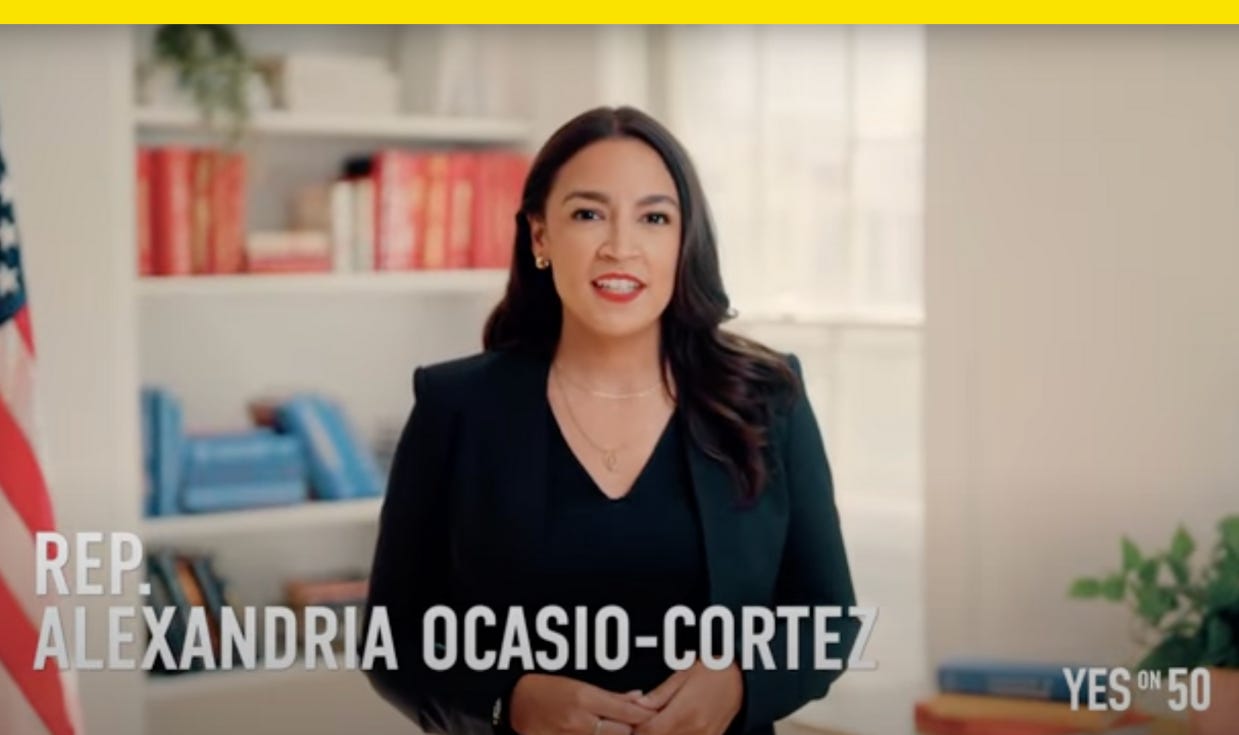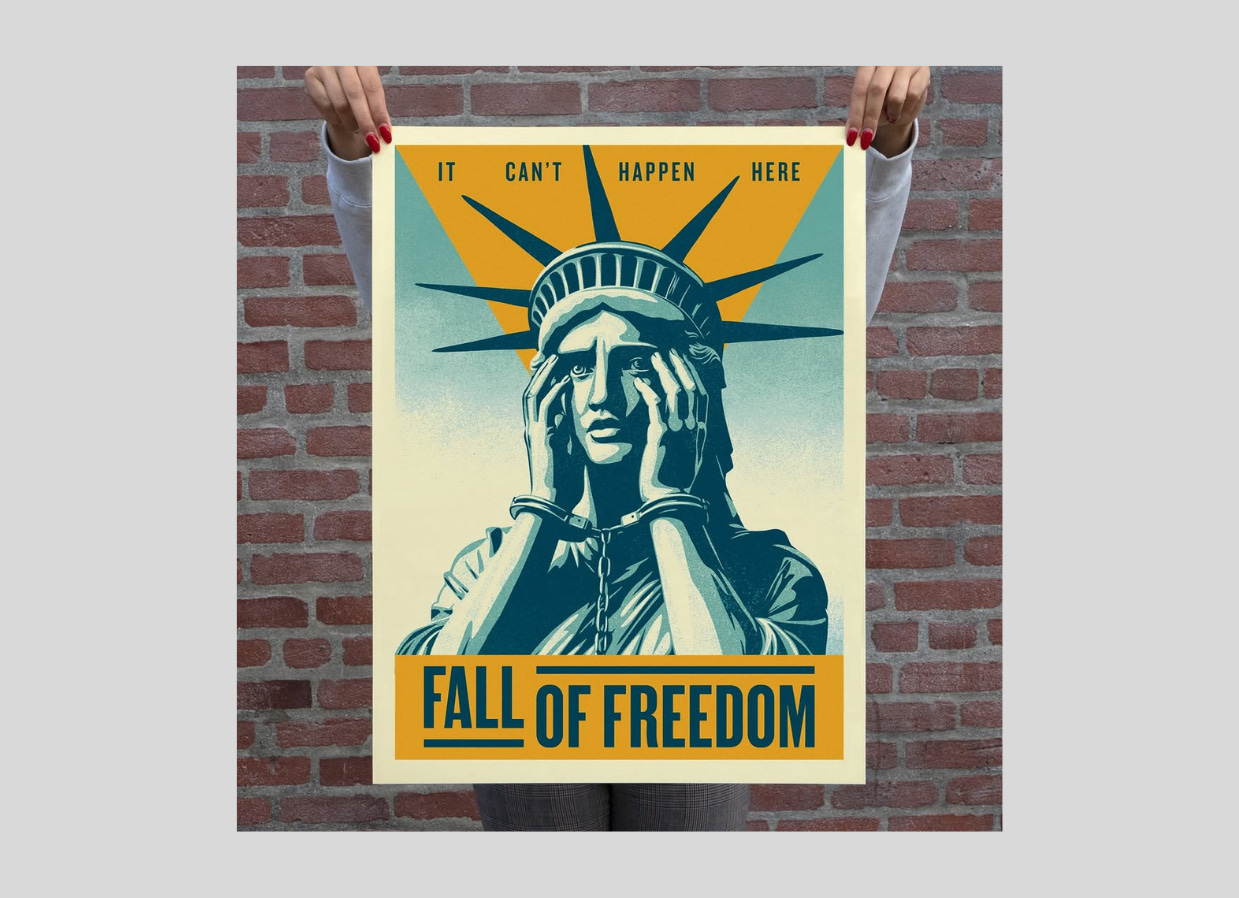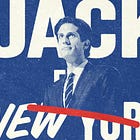Why Trump's attempts to blame Democrats for the shutdown didn't break through
Plus: Turns out AOC was actually the most effective Democrat for California’s Prop 50
President Donald Trump has worked to blame Democrats for the government shutdown, but a majority of Americans are unconvinced that it was Democrats’ fault.
Trump’s administration has used the levers of the state to communicate partisan messages during the shutdown, which ended Nov. 13 after a record 43 days. Ultimately, however, messaging through government channels like web design, out-of-office email replies, and public service announcements weren’t enough.
A 52% majority of Americans blame Trump or Republican lawmakers for the shutdown, according to a poll from Stack Data Strategy, a London market research firm.
That’s in line with an NBC News poll last month that found 52% blamed Trump and Republican lawmakers. And a YouGov poll released last week found more voters rate how Democrats in Congress handled the shutdown slightly better than Trump or Republicans in Congress. These are slim majorities, but they also show the limits of Trump’s influence over public opinion when it comes to the shutdown.
“Nobody wins in a shutdown,” Kenneth Cosgrove, a professor in the department of political science and legal studies at Suffolk University, tells me in an email. “The question is which party gets more of the blame? Traditionally it’s been Congress just because of the media and marketing advantages the executive branch has.”
But Trump himself hasn’t been fully engaged with ending the shutdown as his attention has been split between other efforts, including trips abroad to the Middle East and Asia, and overseeing his White House renovation project.
Trump “wasn’t very visible,” during the shutdown, Cosgrove says. “Plus, how many people look at government websites on a regular basis? Probably not that many.”
Most people aren’t browsing the Department of Housing and Urban Development website, where a bright red banner for the duration of the shutdown said “The Radical Left in Congress shut down the government.” And because major airports refused to air a video filmed with Homeland Security Secretary Kristi Noem blaming Democrats for the shutdown, many travelers didn’t see it even as they spent extra hours at the airport due to delays and cancellations.
With any political messaging, there are two important questions: “How many people actually saw or heard the message, and what else were they seeing or hearing?” says Yanna Krupnikov, a professor of communications and media at the University of Michigan.
“The information environment around us is so full—yes, we have messages on websites and out-of-office emails, but we also have news coverage from various sources, and we have people on social media. People also talk to each other,” Krupnikov says.
It’s also not as if Democrats come out of the shutdown unscathed. The deal to reopen the government came from a handful of Senate Democrats who crossed party lines. The resulting deal doesn’t include Affordable Care Act subsidies, meaning millions of Americans’ health insurance premiums are expected to go up. The deal to reopen the government is unpopular with many Democratic lawmakers, including Sens. Elizabeth Warren of Massachusetts and Chris Murphy of Connecticut.
Still, it turns out tearing down the East Wing draws more attention than a Department of Education OOO message ever could, and SNAP cuts and canceled flights resonate more deeply with the public than a White House website shutdown countdown clock blaming Democrats. In a busy news environment, it’s hard to break through, even for Trump.
This story was first published in Fast Company.
Turns out AOC was actually the most effective Democrat for California’s Prop 50
The congresswoman from New York rated better among voters than California’s governor and senior senator.
California’s Proposition 50 to redistrict the state as a response to Republican redistricting in Texas passed earlier this month with about 64% of the vote, and no Democrat did more to persuade voters than Rep. Alexandria Ocasio-Cortez of New York.
Yes on 50 aired ads starring both local Democrats, like California Gov. Gavin Newsom and Sen. Alex Padilla, as well as out-of-state figures including former President Barack Obama and Ocasio-Cortez who cast the state ballot initiative in national terms. AOC filmed ads in English and Spanish and said Trump’s push for redistricting was an attempt “to force through a Congress that answers to him, not the people.”
Now, research from the Democratic Party super PAC Future Forward obtained by Axios showed AOC’s ads increased support for Prop 50 by 5.1 percentage points. That’s more than Obama, who increased support by 4.3 percentage points, as well as every other Democrat tested.
On Tuesday, a federal court blocked Texas’s redrawn map.
Rockwell’s famous four-panel White House illustration just got bought at auction
The winning bid came from the private nonprofit Jackie Kennedy founded as FLOTUS.
The White House Historical Association bid a winning $7.2 million on Norman Rockwell’s So You Want to See the President! (1943), a four-panel illustration made from black-and-white sketches and watercolor that depicts Americans waiting to visit with then-POTUS Franklin D. Roosevelt at the White House. It was once displayed in the White House itself and could one day be headed back.
The panels show citizens, reporters, lawmakers, Secret Service agents, Miss America, a man in a kilt, and others in detail as they wait in red seats with FDR pictured through the crack of the door in the final panel. The work was previously in the White House from 1978 to 2022 on loan from the family of Stephen T. Early, FDR’s press secretary who commissioned the work.
The White House Historical Association is a private nonprofit founded by Jackie Kennedy in 1961. The group funds the acquisition and protection of historical artwork and other household items for the White House, commissions official White House portraits (like the Obama’s in 2022), and sells the Christmas ornaments (like the ones I inherited from my grandma).
So You Want to See the President! is the White House Historical Association’s most expensive purchase, beating the previous record of $1.5 million for Jacob Lawrence’s The Builders (1947), according to Artsy. The auction house Heritage Auction handled the sale.
“Rockwell had an unparalleled gift for translating the ideals of democracy into something personal and accessible,” Heritage senior vice president Aviva Lehmann said in a statement. “In So You Want to See the President!, he turns the grandeur of the White House into a stage for ordinary Americans.”
Have you seen this?
Shepard Fairey’s new work is the Statue of Liberty in handcuffs. The artist contributed “Fall of Freedom Liberty” as a giveaway and free download for Fall of Freedom, a two-day initiative encouraging visual artists, musicians, museums, writers, and others to use their work as a form of creative resistance. “Freedom looks like people being able to express themselves without fear of reprisal. They want us to be quiet, they want us to be afraid, and that’s why it’s so important to be loud right now!,” Fairey wrote. [Obey Giant]
Is the Resolute Desk at Mar-a-Lago? Over the weekend, a photograph of what appears to be the Resolute Desk circulated on X, but what is on display at Mar-a-Lago is most likely a copy. [Town & Country]
How Jeffrey Epstein used SEO to bury news about his crimes. Documents released by the House Oversight Committee shed light on Epstein’s day-to-day, largely via email — including his preoccupation with his Google presence. [The Verge]
They turned Keith Haring’s work into seating. Haring’s Dog and Crawling Baby designs once used for a carousel were recreated by the Italian design brand Gufram and the artist-designed amusement park Luna Luna. [Hypebeast]
Inside Trump’s merch room. If you’ve ever wondered what that White House room with all the Trump merch is, it’s the Oval Office study that past presidents used as an office and today’s POTUS uses like a storefront. [Whig by Hunter Schwarz]








